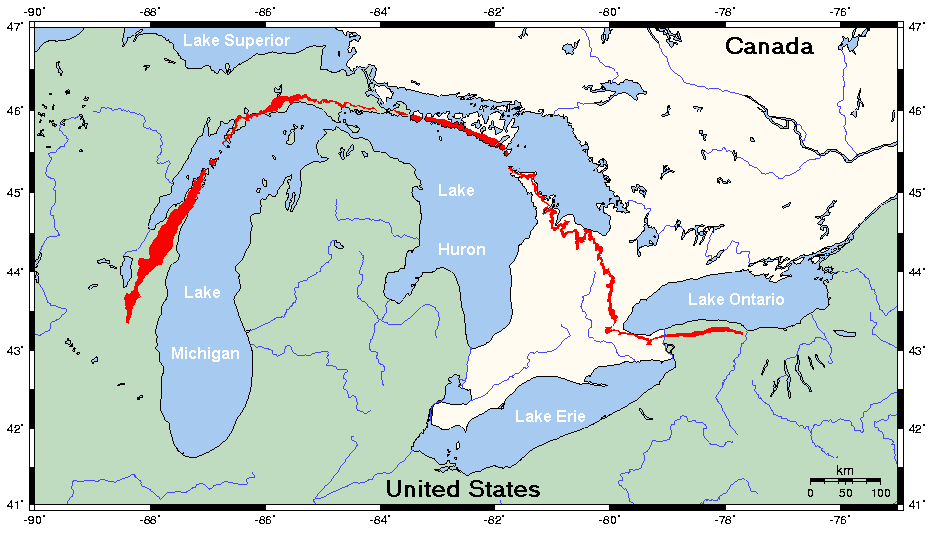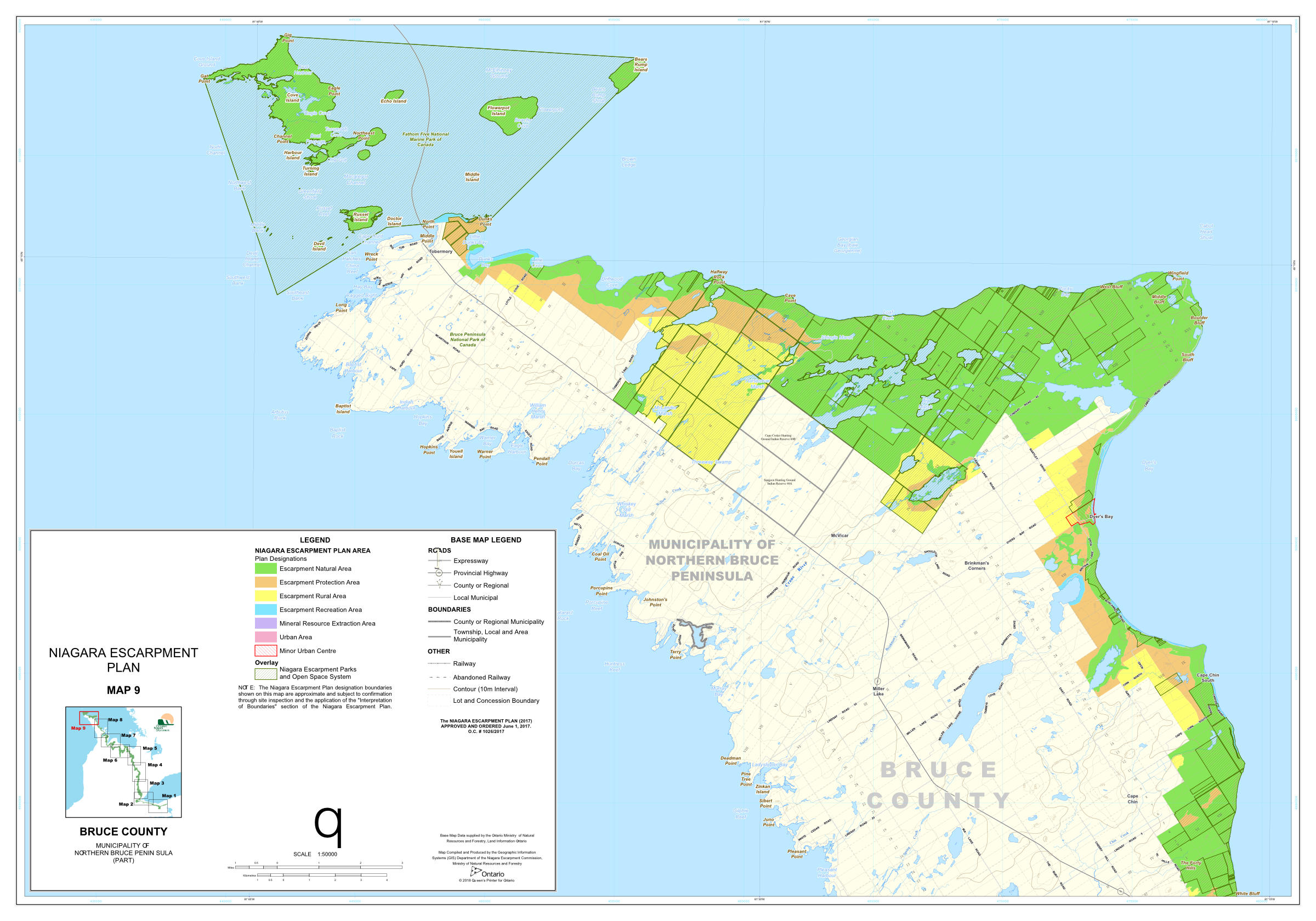
The Niagara Escarpment
A UNESCO Biosphere
The Niagara Escarpment in Ontario stretches nearly 725 km from the Niagara River to Tobermory and Manitoulin Island, rising over 0.5 km above sea level in places. The entire Escarpment extends from western New York across southern Ontario to the Saugeen (Bruce) Peninsula, under Georgian Bay to Manitoulin Island, and south along the western shore of Lake Michigan.
The most spectacular Escarpment sections, recognized by UNESCO as a Biosphere, are covered by the Niagara Escarpment Plan. Formed over 450 million years ago, the Escarpment's gently sloped rock strata and steep cliffs are the result of extensive geological erosion over the past 250 million years. This natural wonder features incredible rock cliffs, breathtaking waterfalls, underwater caves, and 1,000-year-old Eastern White Cedar trees, telling a fascinating story of Ontario's natural history that must be preserved for future generations.
The most spectacular Escarpment sections, recognized by UNESCO as a Biosphere, are covered by the Niagara Escarpment Plan. Formed over 450 million years ago, the Escarpment's gently sloped rock strata and steep cliffs are the result of extensive geological erosion over the past 250 million years. This natural wonder features incredible rock cliffs, breathtaking waterfalls, underwater caves, and 1,000-year-old Eastern White Cedar trees, telling a fascinating story of Ontario's natural history that must be preserved for future generations.
UNESCO Biosphere
In 1990, the United Nations Educational, Scientific and Cultural Organization
(UNESCO) named Ontario’s Niagara Escarpment a World Biosphere Reserve.
This designation recognizes the Escarpment and land in its vicinity as a
nationally and internationally significant landform, and endorses the
Niagara Escarpment Plan.
This Plan is Canada’s first, large-scale environmental land use plan.
Implementation of this Plan upholds the biosphere reserve principles by
balancing protection, conservation and sustainable development to ensure
that the Escarpment will remain substantially as a natural environment for
future generations, and by promoting collaboration and providing
opportunities for research, monitoring and education.
Collectively, UNESCO Biosphere Reserves form an international network of sites of excellence that collectively work to ensure environmental, economic and social (including cultural) sustainability, acting as demonstration areas and learning sites with the aim of maintaining and developing ecological and cultural diversity, and protecting ecosystem services for human well-being.
Collectively, UNESCO Biosphere Reserves form an international network of sites of excellence that collectively work to ensure environmental, economic and social (including cultural) sustainability, acting as demonstration areas and learning sites with the aim of maintaining and developing ecological and cultural diversity, and protecting ecosystem services for human well-being.
The Niagara Escarpment





